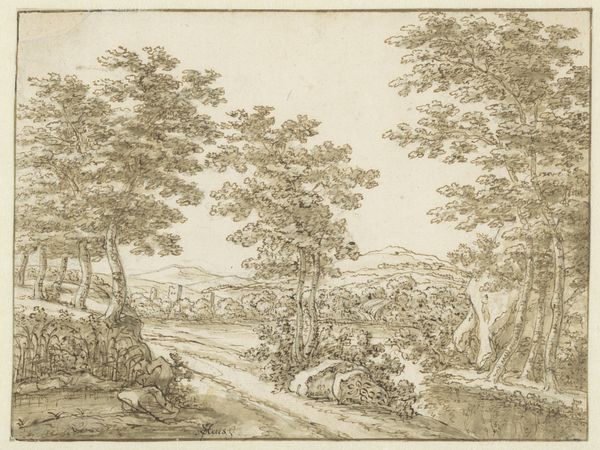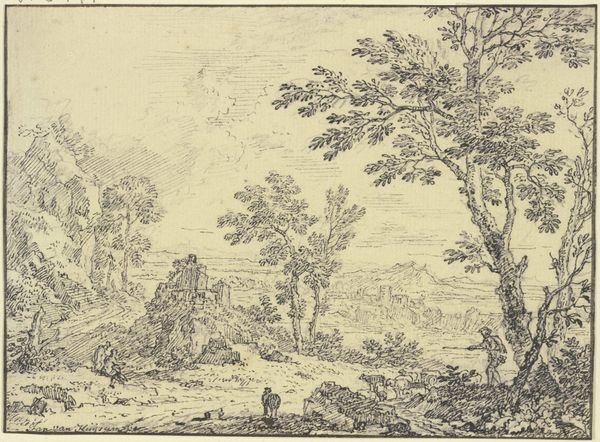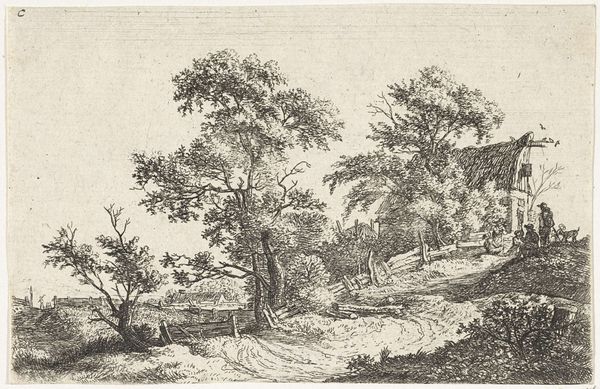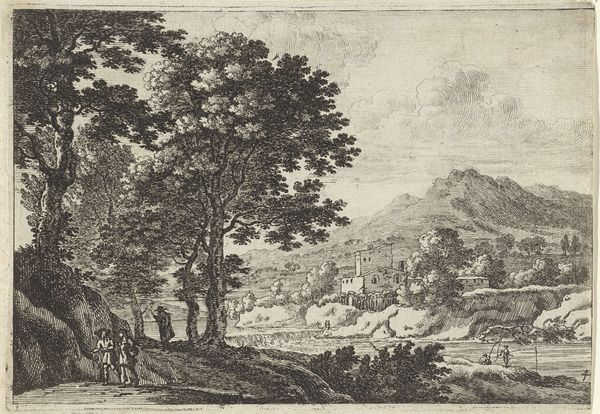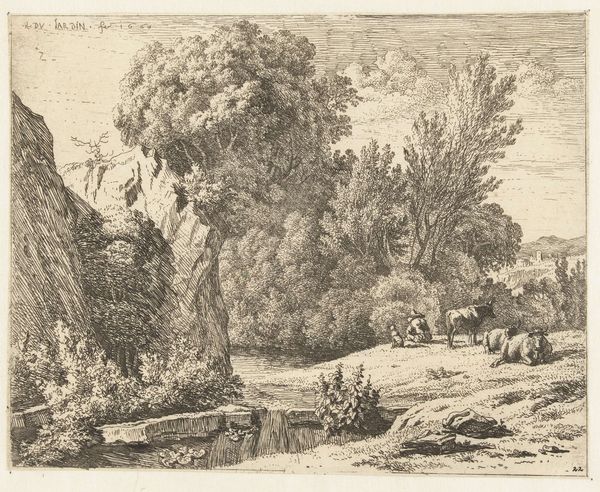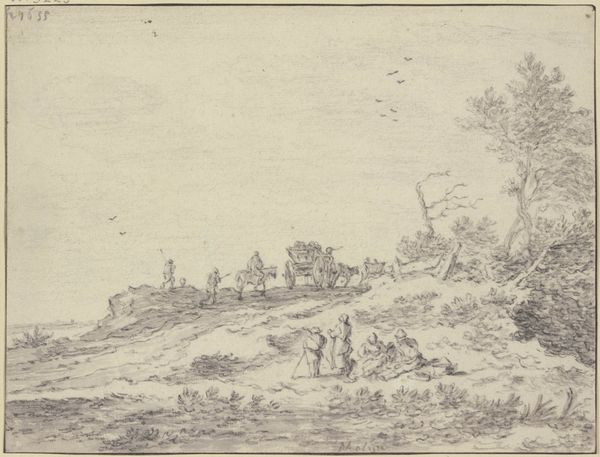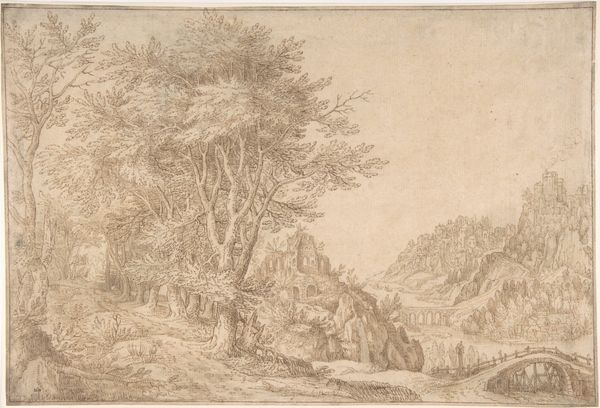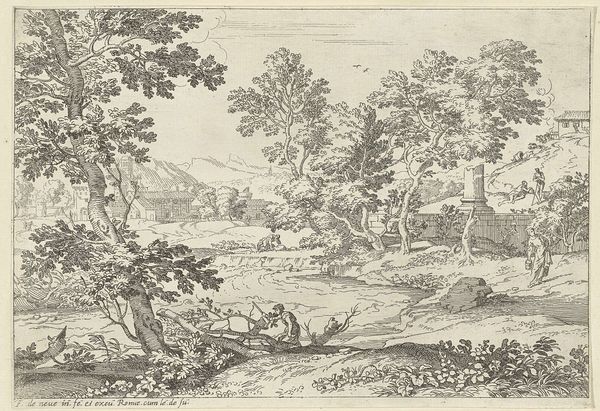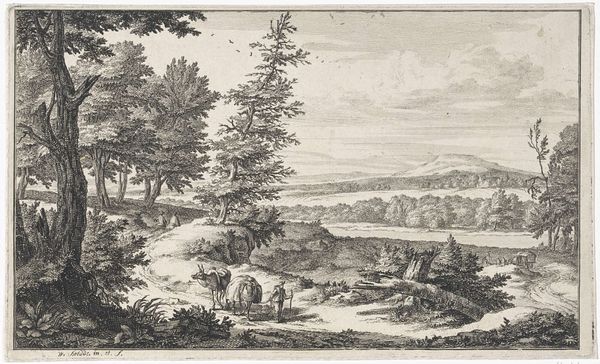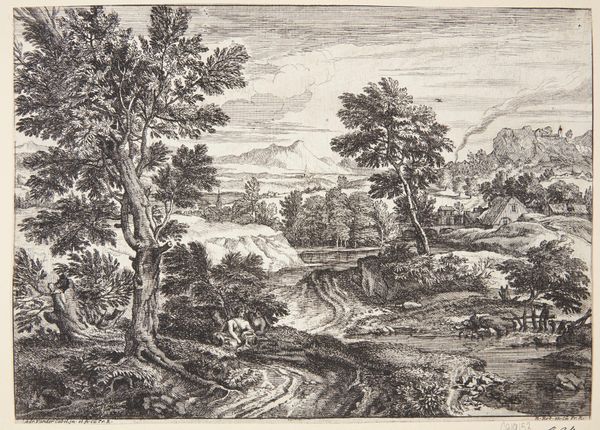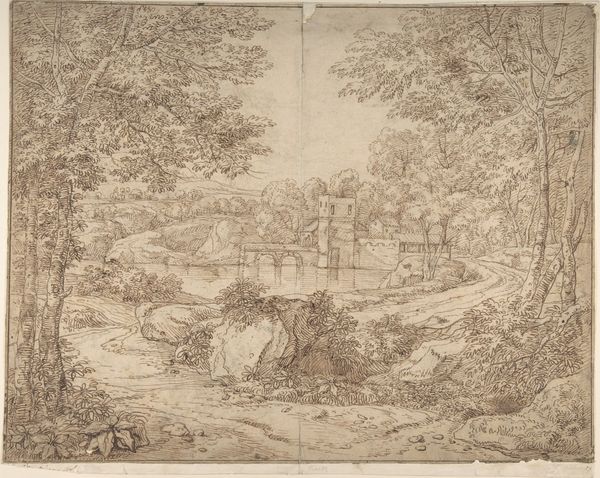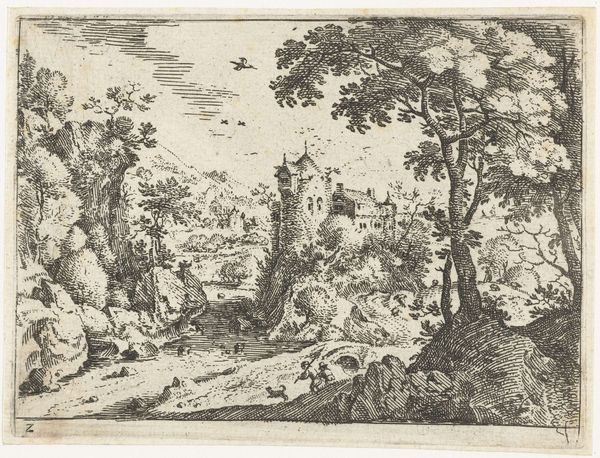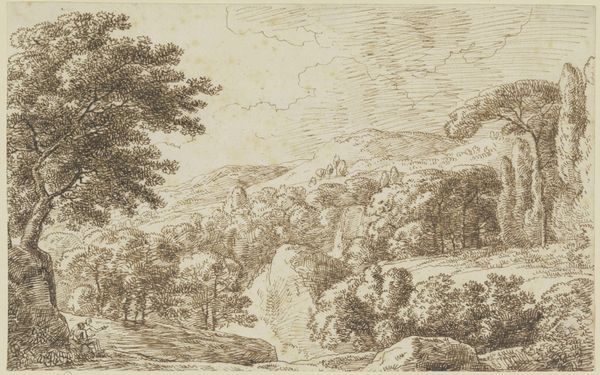
drawing, print, pencil
#
drawing
#
light pencil work
#
baroque
#
dutch-golden-age
# print
#
pen sketch
#
pencil sketch
#
human-figures
#
incomplete sketchy
#
landscape
#
figuration
#
personal sketchbook
#
ink drawing experimentation
#
pen-ink sketch
#
pencil
#
pen work
#
sketchbook drawing
#
genre-painting
#
sketchbook art
Dimensions: sheet: 5 9/16 x 7 5/8 in. (14.2 x 19.4 cm)
Copyright: Public Domain
Curator: Before us we have "Figures on a Road" by Pieter de Molijn, created sometime between 1605 and 1661. It's currently held at the Metropolitan Museum of Art. Editor: It has a quality of ephemerality, like catching a half-forgotten memory on paper. A landscape filled with figures, caught with delicate pencil lines. Curator: Absolutely. Notice the road itself, snaking through the composition—a potent symbol. Roads often represent journeys, transitions, even destiny. Think of pilgrimage routes, trade routes… Editor: But here, it seems like just a well-trod path. Look at how the different groups interact; that central gathering with what seems to be merchants bartering. De Molijn must have witnessed similar exchanges often. And the drawing itself! The sheer abundance of graphite available in that era, compared to silverpoint. It democratized drawing practices enormously! Curator: Yes! The informality is what's interesting to me here. These figures aren’t posed allegories; they are everyday people inhabiting a symbolic landscape. And that landscape, rendered in such a loose, almost fleeting style… it speaks to the transient nature of life. Notice that group atop the hill; what are they observing? What are they searching for? Editor: Perhaps simply better grazing lands! Though I agree the transience comes across immediately through his economic use of material. Each stroke counts to evoke a fleeting impression of people working together, in contrast to commissioned, devotional artworks, labor put to different purposes. Curator: Precisely! The act of observing and recording everyday life gains significance. It shows that simple tools such as pencils give common people opportunities to participate and be documented and therefore be part of shared history and collective cultural memory. Editor: A lovely reminder of art's purpose reflecting cultural reality in even the simplest form. Thanks for your insight into De Molijn's fascinating work. Curator: And thank you. It is through explorations that the meanings hidden in artwork come to light, inspiring reflection beyond just what our eyes capture.
Comments
No comments
Be the first to comment and join the conversation on the ultimate creative platform.
